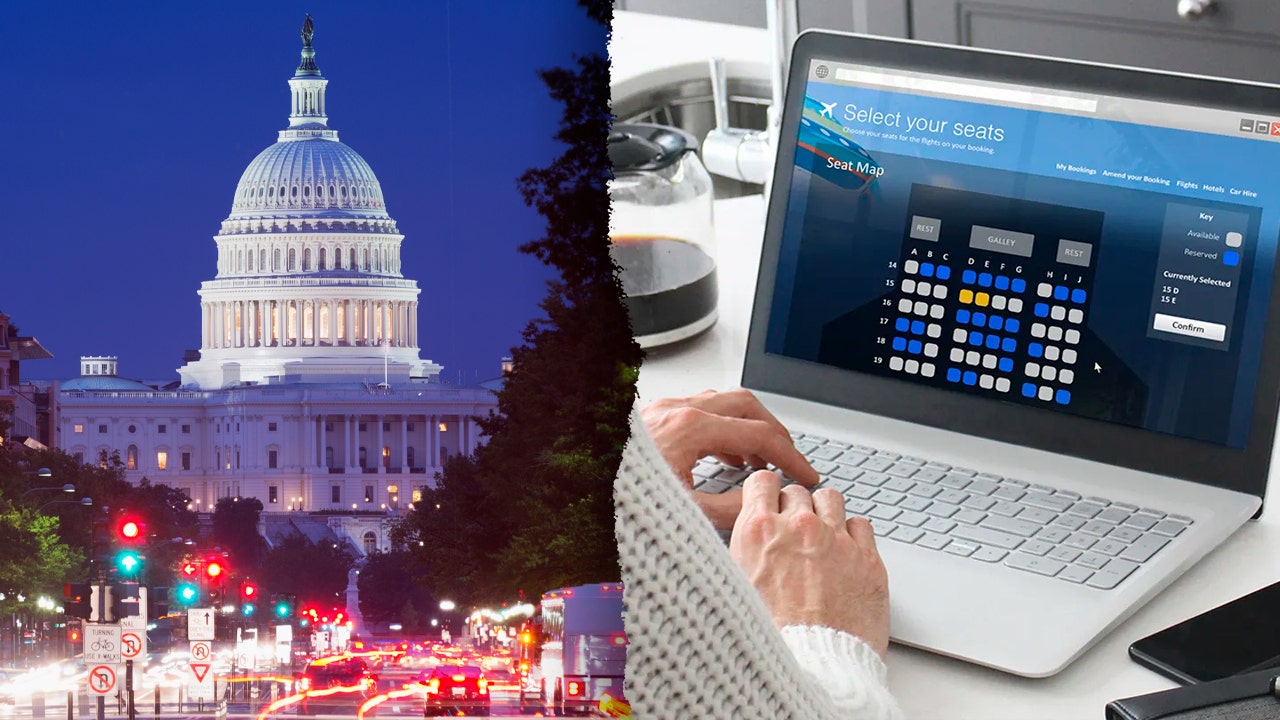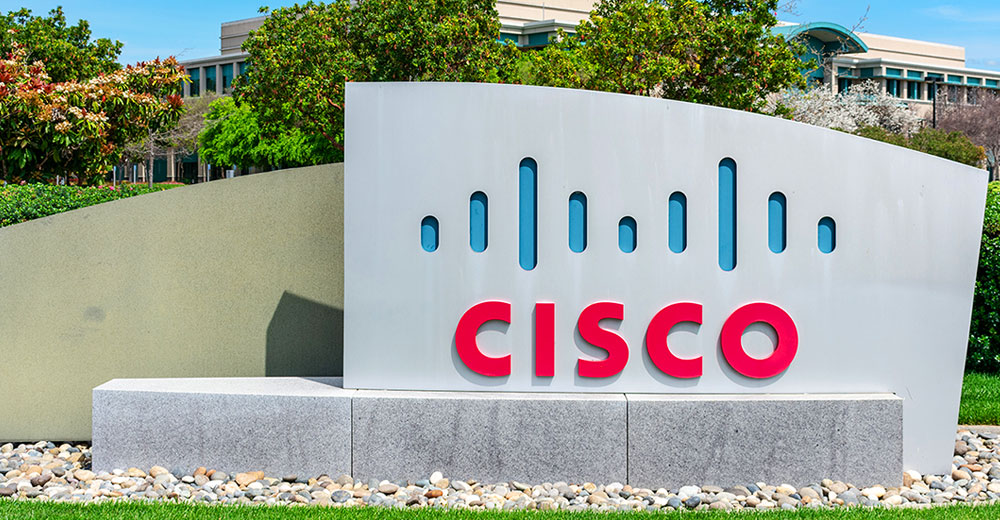Many amazing products launched this year, and we’ll cover some of them. However, unlike most years when the decision was difficult, one product stood out well above the rest as revolutionary. What made it particularly special was that it was a bold bet that paid off and helped its manufacturer become one of, and for a time, the most valuable company in the world.
Typically, I don’t do a Product of the Week for this column as it focuses on the Product of the Year, but I ran into a confection that I’ve become almost addicted to, thanks to my love of dark chocolate, so I’m compelled to squeeze it in. It’s from a small company called Sweet as Fudge. So, before we revisit 2024 and discuss some of the standout products, let’s talk about this chocolate.
The product is Dark Chocolate Triple-Dipped Malt Balls. There’s also a sugar-free version that’s surprisingly good. A pound costs around $15, but these things are so good. I keep them in the refrigerator so they melt more slowly in my mouth. If you are into chocolate and like malt (chocolate malt is my go-to drink in the summer), give them a try this holiday season.
Now, on to the main event. Let’s begin with the contenders that didn’t quite make the top of my list and conclude with the one that earned the title of Product of the Year.
Fisker Ocean
Image Credit: Fisker
It’s a shame this company didn’t survive the year, but the Fisker Ocean — which I had planned to buy — was arguably the best electric SUV on paper. It had a bunch of cool, unique features like a solar panel roof and a pull-up table so the driver could enjoy a snack or meal in the car without making a mess.
This eSUV was well-designed and had decent range, and I thought it was one of the best-looking vehicles in the market. Operating inefficiencies and apparently some financial mismanagement killed the company and the car. RIP Fisker.
2025 Audi RS e-tron® GT Performance

Image Credit: Audi Communications
I bought a used 2022 Audi e-tron GT after Fisker went under. Right after I bought it, Audi released the 2025 model, and it is a beast. It has nearly 1,000 HP, giving it blazing performance (more than I need as my base car is quick enough), hydraulic suspension allowing it to adjust its height nearly instantly, and the car is beautiful.
Oh, they added around 100 miles of range over my car, making it far more useful for a daily driver. At $171,000, it is out of my budget range, but wow, what a car!
Hyundai Ioniq 5 N
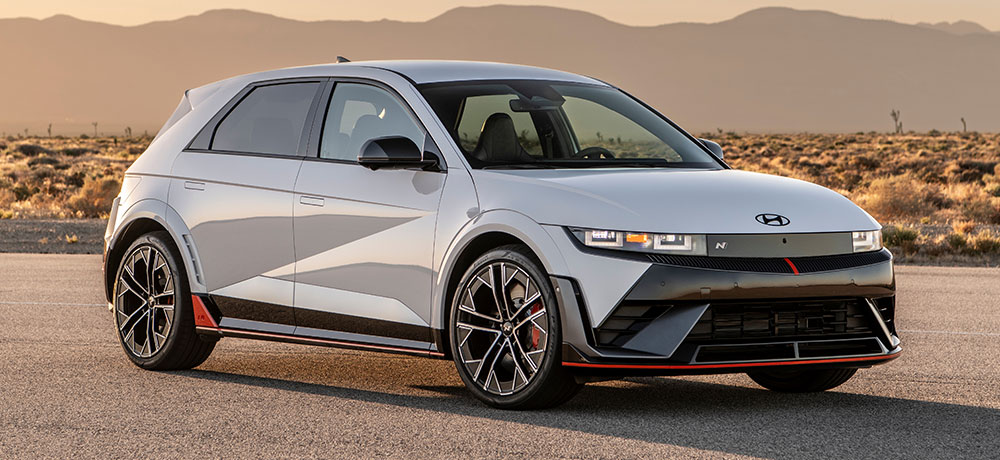
Image Credit: Hyundai
I think Hyundai’s approach with the Ioniq 5 N electric car is the way to go for those who miss the engine sound and gear shifting in a manual gas car. This Hyundai is arguably the most fun electric car in the world. It does a decent job faking engine sounds, and shifting feels like you are shifting a car — even though this is emulated and actually makes the car slower. But it is incredibly fun to drive and reasonably quick (0 to 60 in 3.25 seconds).
The Hyundai Ioniq 5 N isn’t badly priced for a performance car that lists under $70,000, and it’s likely quicker than your buddy’s far more expensive exotic car.
OpenAI’s ChatGPT
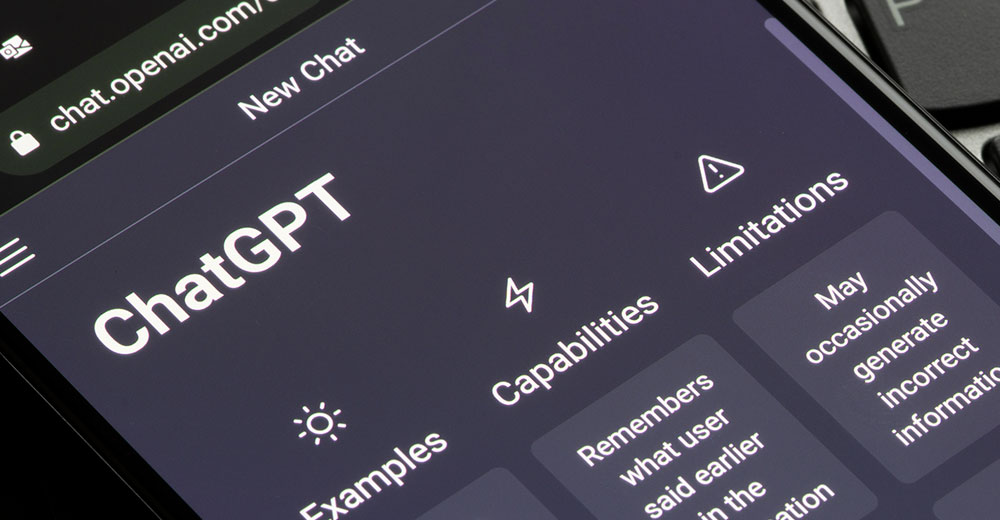
Wow, talk about an offering that changed the world! ChatGPT is the core technology under both Apple and Microsoft’s AI efforts. Its Dall-E capability for images is impressive (as is Google’s Gemini, which I also use), and it has changed the way many of us write software, create images, and even write complete works.
ChatGPT has been advancing incredibly quickly, and with artificial general intelligence (AGI) it promises to change how we create what we read. ChatGPT and its peers are starting to change what we watch. It is a truly revolutionary platform, though Google’s Gemini Advanced is no slouch either. While ChatGPT launched before 2024, it became the basis for both Microsoft’s and Apple’s huge AI efforts this year.
Windows 365 Link
Ever since the PC came out, we’ve essentially been asking to go back to terminals. We love the freedom the PC gives us, but we aren’t crazy about the complexity of supporting them ourselves, particularly at scale. Microsoft helped create the problem, and, to be fair, it has mitigated a lot of the related pain by improving Windows.
However, Windows 365 Link is a nearly instant, on-terminal-like device that promises and mostly delivers Windows capabilities with the reliability and simplicity of a terminal. It’s kind of a “Back to the Future” product and a bit of a man-bites-dog story. I expect this to be the future of the PC eventually.
Bluesky
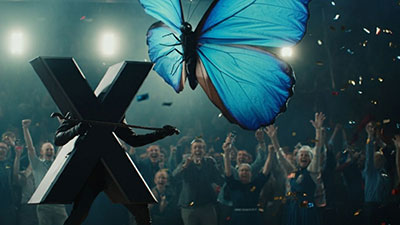
Ever since Elon Musk bought Twitter, many of us have been looking for an alternative. Each time we got excited about a new effort, we were disappointed.
Bluesky has been the closest thing to a better Twitter so far, and more and more people I know have migrated to it. Given its distributed architecture, it also has some technical advantages over X/Twitter.
Its moderation, in my opinion, appears to be better than Twitter’s. It was a huge step in the right direction, and I hope it makes it into our future.
Google Pixel 9 Pro Fold
The Google Pixel 9 Pro Fold is now the phone I carry, and it is awesome. The updates to the phone have been helpful. It locks if it moves suddenly, as if someone stole it, for instance. It also locks if you are reading in a plane when it takes off, but you can just log in again. It folds out into a small tablet, so if I don’t have my glasses handy, I can still make the text large enough to read. Speaking of reading, it is the best e-book alternative since the discontinued Microsoft Duo.
I wish Google had used a Qualcomm Snapdragon instead of its own processor, but the difference isn’t as bad as it was with the first Fold. I’m just loving this phone.
Huawei Mate XT Tri-Fold Smartphone
Huawei has demonstrated remarkable ingenuity by navigating technological restrictions to deliver one of the most desirable smartphones in the world, despite some initial growing pains because this was almost an entirely new platform.
Given that Huawei wasn’t allowed to buy the technology from the U.S., this three-screen phone that went from iPhone to iPad size is a technical marvel. It showcases where we will likely go with phones and set itself apart from competitive devices this year.
Huawei remains impressive, considering the problems posed by the conflicts between the U.S. and China this year. Impressive work.
Lenovo Auto Twist AI PC Concept
Lenovo is another company that stood out this year in terms of sheer innovation. The product that most caught my eye was the ThinkBook Auto-Twist AI PC Concept.
What makes this PC different is that it automatically pans the screen and on-board camera based on where you are in the room. This feature is particularly handy for those of us who have to move around during team calls or when you need to watch a how-to video while doing something else.
Watching that screen swivel automatically so it remained focused on the user was awesome. As AI advances, I expect we’ll see even more innovation when it comes to AI PCs.
HP Print AI
For me, 2024 was defined by AI innovations. The HP Print AI offering, released in September, directly addresses a lot of our aggravation with printers, automatically formatting things for pages without cutting off the borders and positioning the data and graphics so that each print job is perfect.
We’ve all had issues when printing a document and not having it lay up properly. Spreadsheets are the worst, often printing one line or column on a page and then kicking out hundreds of useless print copies that make little or no sense, like this:
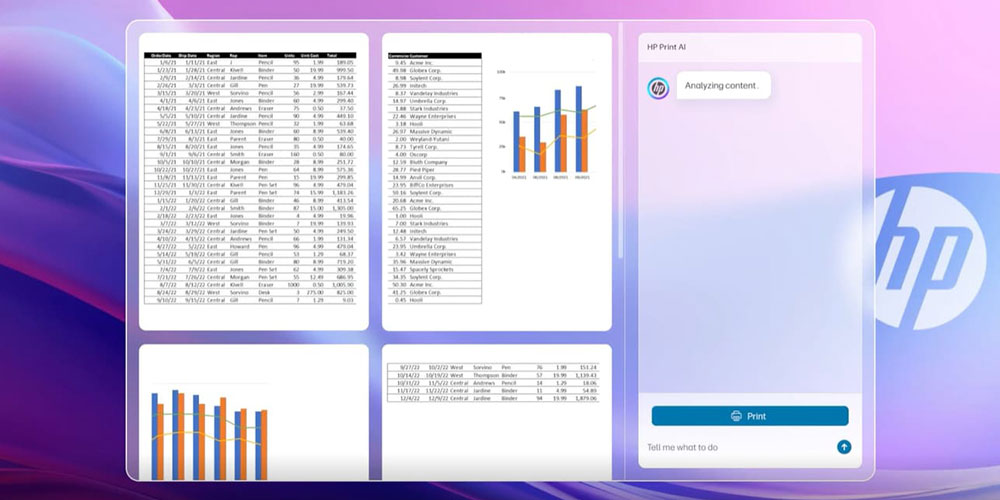
Image Credit: HP
HP Print AI will auto-format print jobs, so the printed document is useful. The AI analyzes your print job based on past training to determine the optimal format. Then, it auto-configures for that result so each print job is as perfect as the AI can make it, like this:
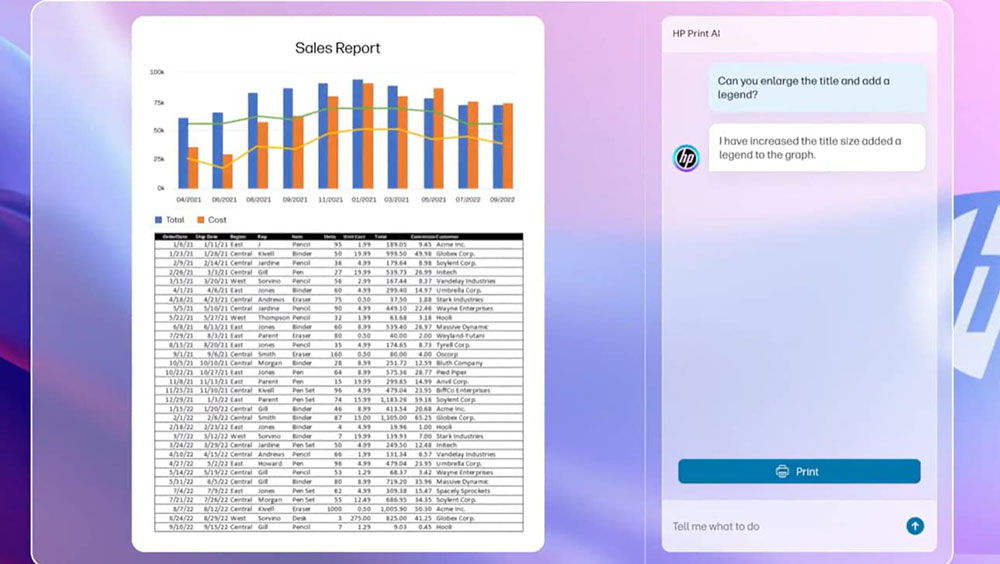
Image Credit: HP
Printer technology needs to be moved into this decade, and this software from HP should do that. Expect to see more advances like this from many companies that plan to use AI to address customer frustrations with their products.
Disney BDX Robots
The BDX robots are part of Project Groot and use Nvidia’s Jetson robotic technology. You’ll see them at Disney parks, and eventually, you’ll be able to buy one.
This little guy is the closest to a real “Star Wars”-like robot I’ve ever found. I wish I’d been smart enough to invest in Lucas Films back then rather than spending my money on going to that first “Star Wars” movie over and over and over again. BDX showcased how far robotics has come, and we’ll be seeing a lot of amazing robots you can buy in 2025.

Nvidia Blackwell B200 GPU
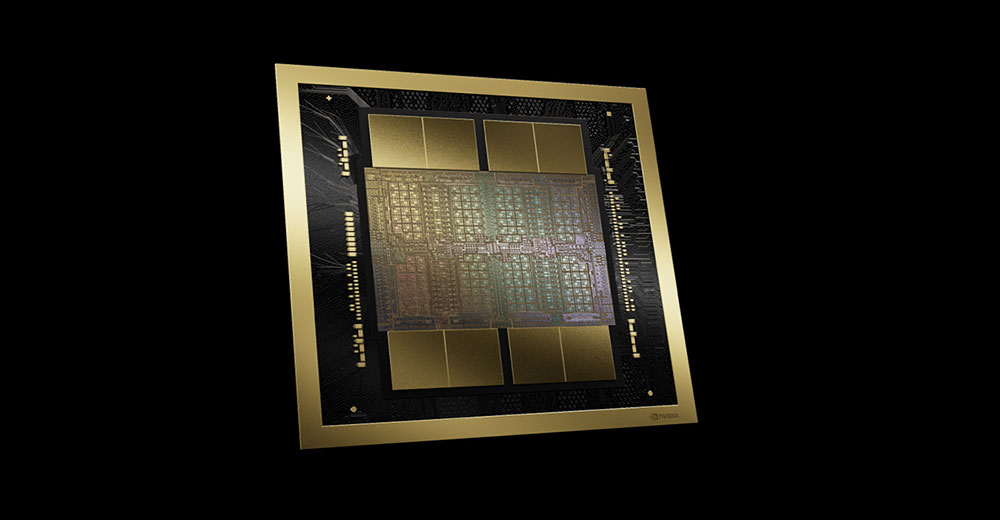
Image Credit: Nvidia
When Nvidia CEO Jensen Huang first presented Blackwell, it was a fantastic event that showcased how a company should release a revolutionary product. This GPU is massive in terms of performance and power requirements, and it is forcing a gigantic pivot from air to water cooling in cloud and enterprise data centers as the world pivots to AI.
The backstory on this part and Nvidia’s entire AI effort is a tale of legend. Back in the early 2000s, when only IBM was really working with AI, Jensen Huang became convinced it was a much more near-term future event. For much of the next 20 years, Nvidia’s financial performance dragged as the company basically bet its future on AI. Had Huang not been a founder, he likely would have been fired.
Then OpenAI asked for help, and Nvidia provided it. Thanks to Nvidia, we now have generative AI that works. Blackwell is the current culmination of this work, a massive GPU that is extremely power-hungry but also incredibly efficient. While it uses a ton of power, it does much more work than any group of other GPUs or NPUs can do with that same power.
AMD’s Threadripper CPU was equally innovative, but it was designed for existing market needs. Nvidia was working on Blackwell before AI became a market, and that’s just never done. By taking what seemed to be an unreasonable risk and executing on it, Nvidia caught its competitors sleeping, and now Nvidia is nearly synonymous with AI.
Back when there were pensions, CEO compensation was more reasonable, and boards more supportive of long-term strategic moves, an effort like this wouldn’t have been that unusual. But in today’s world, you just don’t see that.
Nvidia’s Blackwell effort gave me hope that the U.S. might be able to return to a more strategic future. It caught the imagination of a world increasingly focused on and concerned about AI. Blackwell was a once-in-a-generation leap in performance and a massive bet that could have gone badly, so it is my choice for Product of the Year.
Read the full article here


3_800x533_L_1412602648.jpg)



